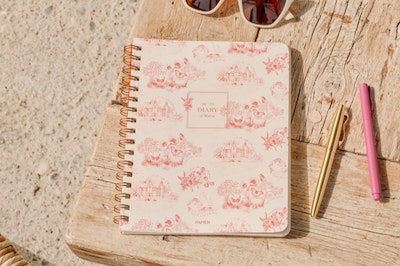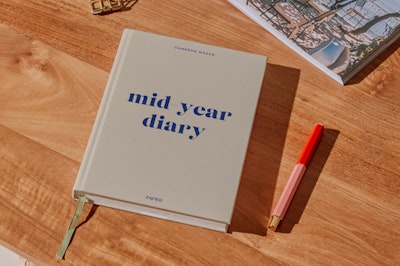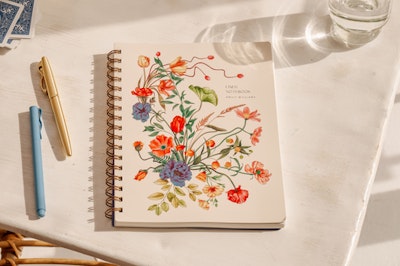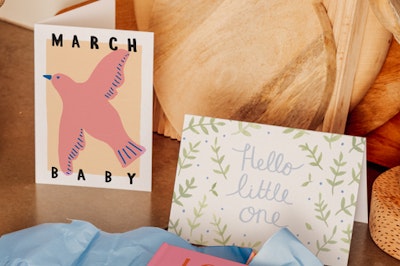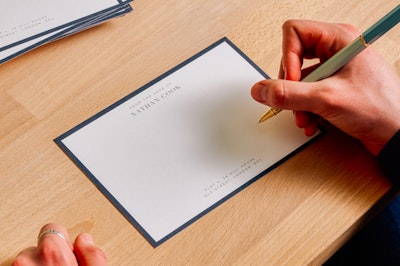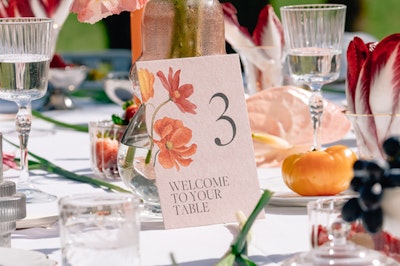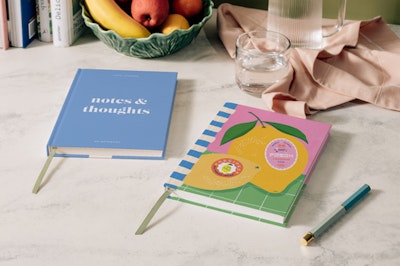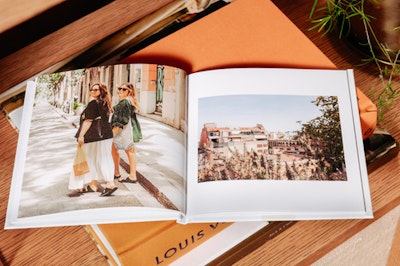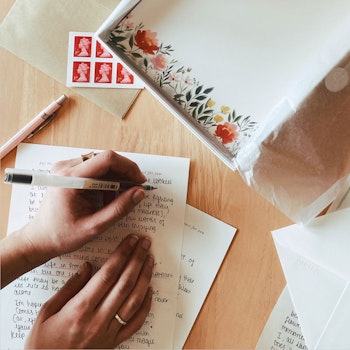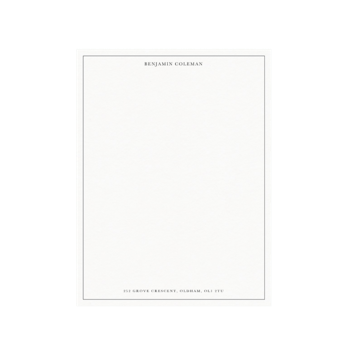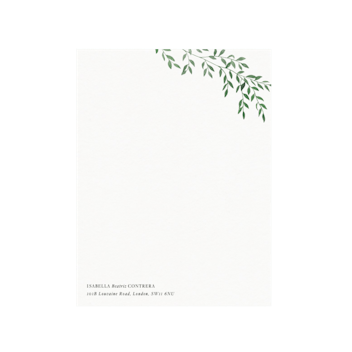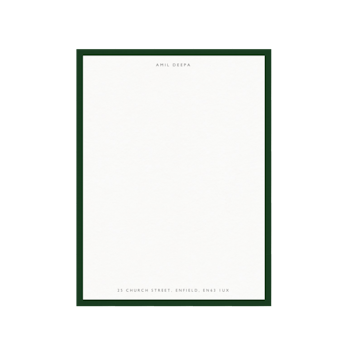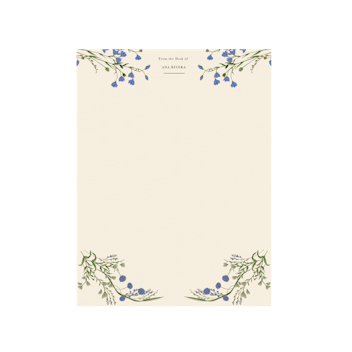It’s official. Letter writing is having a revival. In these digital days, when most of our messages are seen on screen and sent in an instant, the notion of receiving a thoughtful, handwritten note through the post feels more special than ever.
It’s a chance to press pause on the fast pace of life. The sender gets to stop, slow down and enjoy the pleasure of putting pen to paper; the receiver winds down as they carefully unfurl a meaningful message from someone who cares.
Knowing what to write can be a little tricky, especially when you’re faced with very lovely letter writing paper. But, whether you’re scribing a love letter, an apology letter or a thank you letter, our how-to guide should deliver some helpful reminders and tips.
Why should I write a letter?
With more thought than a notification, sending a letter in the post shows a sense of care at every step, from choosing the right paper to curating words you can’t delete or tweak. For the recipient, the joy of a letterbox arrival that isn’t a bill or brochure is unmatched – something special and unexpected on the doormat for once!
Staying in touch via the written word may feel slow and manual in a digital world, but that’s half the magic. It’s the antidote to screen time, predictive text and the dreaded blue double tick, providing a moment of calm, considered communication for both the writer and the reader in our otherwise instantly contactable day-to-day.
Alongside time away from our phones being beneficial to our wellbeing, writing on paper feels more personal, too. Anyone can send a text, or speed write a message between tasks on their to-do list, but taking the time to sit, write, buy a stamp and send preserves an art of staying in touch that’ll never go out of style.
Who should I send a letter to?
Whether it’s a note of congratulations, pages filled with life updates or words to simply let someone know you’re thinking of them, there are so many reasons to send a letter. You might want to write to a friend from your sun lounger about all the things you’ve been getting up to this summer, or thank your great aunt for her kind birthday gift. Or maybe you want to break down barriers with words you feel unable to express face-to-face.
It could be a note of gratitude or one where you have news to share, but asking questions and leaving space for response is always key in creating a flowing communication by mail. Pen pals may feel like a thing of the past, but trust us – there’s no better way to keep in contact.
How do I write a letter?
Take a look at our template…

Sender address
14 Paper Lane
London
EH5 3UT
27th August, 2023
Greeting
Dear Jasmine,
Message
Hope you're doing well and had the best time in Deià? Just a note to say thank you so much for the lovely apron - it's perfect. I've been wearing it to all my pottery classes and getting lots of compliments. Let's arrange a catch up this month, please? It's been too long! I know Suzy is in London next month, so perhaps we could all meet for a long lunch. Let me know.
Sign off
With love,
Delilah
How to start a letter
How you start your letter depends on who you’re writing to and why. Think about how well you know the person and whether your letter is formal, informal –or somewhere in between – to decide on your tone. Here are a few examples:
To whom it may concern,
Tone: Very formal/traditional
For addressing: People you don’t know
Dear Sir or Madam,
Tone: Formal/traditional
For addressing: People whose gender you know but name you don’t
Dear [Ms. Hardy],
Tone: Formal/modern
For addressing: General letters to people you don’t know well
Dear [Samuel],
Tone: Semi-formal/traditional
For addressing: People you know well or someone you know on a first-name basis
To [Anya],
Tone: Semi-formal/modern
For addressing: People you have a good, friendly relationship with
Hi/Hey [Nico]
Tone: Informal/modern
For addressing: Friends and family
To my [amazing big sister],
Tone: Very informal/modern
For addressing: Close friends, family, partners or anyone you want to show affection to

How to close a letter
Signing off your letter is just as important as the start. Again, think about who you are speaking to and the content. Notes to loved ones call for a conversational round-off, whilst formal letters should be finished with a traditional closing.
Yours sincerely,
Tone: Formal/traditional
For signing off: Letters that are addressed with someone’s name
Yours faithfully,
Tone: Formal/traditional
For signing off: Letters to someone you don’t know, usually correspondence beginning with ‘Dear Sir/Madam’
With sympathy,
Tone: Formal/traditional
For signing off: Letters of condolences
Best wishes,
Tone: Semi-formal
For signing off: Letters to people you have a good relationship with, from relatives to work associates
Best,
Tone: Semi-formal/contemporary
For signing off: Letters to people you’ve written to a few times
Many thanks,
Tone: Semi-formal/contemporary
For signing off: Letters to show your appreciation for the time or efforts of someone you know
Love from,
Tone: Informal/contemporary
For signing off: Letters to friends and family or anyone you love!
How to address a letter
How to set out your letter depends on the kind you’re writing. Business letters should include both the sender and recipient address, while personal letters can omit the recipient address and sometimes the sender’s too. We suggest all letters include the date – it’s essential for formal letters and a nice touch for social ones.
Sender's address
The letter author’s address should include full address and postcode and be placed on the top right-hand side of the page. If you already have your address printed in a letterhead, then there’s no need to write it out.
Recepients' address
The recipient’s address should include their name and title (e.g. Dr Warwick) along with their full address and postcode. Include their company name for business letters too.
Date
The date usually sits on the right-side of a letter, 1-2 lines beneath your address. For the UK, the format is day-month-year, e.g. 24th September 2021. And in the US, it’s month-day-year, e.g July 17, 2023.

Choose a letter writing set to suit your style
Once you’ve decided the kind of letters you’ll be writing – it’s time for the fun part. Choose from letter writing sets that reflect who you are, and think about whether you’re sending letters for work or pleasure (or perhaps both!)
Don’t forget to personalise your letter writing paper with your name, address, job or title, and feel free to add touches like gold foiling for something extra fancy. Fun prints like flowers and colourful borders work well for letters to friends and loved ones, while something more monochrome may be best for business affairs and more serious subjects.
Always seek out a flat writing surface and test your pen before pressing down on your writing paper. In fact, it sometimes helps to draft your letter in a notebook before writing the real thing, to make sure your message is concise and error-free. And with the latter in mind, always proof your letter before sending, giving you the chance to scribble out or start over if needed.
